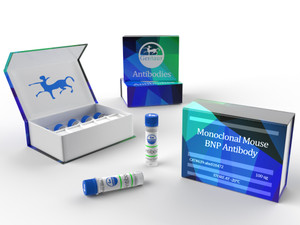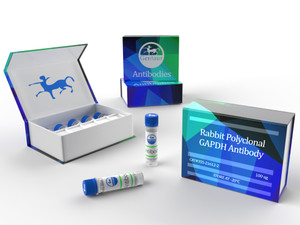prokaryotes
General description
Monoclonal Anti-GAPDH (mouse IgM isotype) is derived from the hybridoma GAPDH-71.1 produced by the fusion of mouse myeloma cells (NS1 cells) and splenocytes from BALB/c mice immunized with rabbit GAPDH (glyceraldehyde-3-phosphate dehydrogenase). The gene glyceraldehyde-3-phosphate dehydrogenase (GAPDH) is mapped to human chromosome 12p13. The protein localizes in the cytoplasm but can be translocated to the nucleus depending on cellular conditions.
Specificity
Monoclonal Anti-GAPDH recognizes human, monkey, bovine, canine, rat, mouse, hamster, mink, rabbit, chicken, and turkey GAPDH. It does not cross-react with non-vertebrate and prokaryotic species.
Application
Monoclonal Anti-GAPDH antibody produced in mouse is suitable for western blotting using:
- protein extracted from heart tissue of mice at a working dilution of 1:25,000
- myelin and axogliasomal fractions from human CNS
- nuclear and cytoplasmic fractions from TBP-13Q and TBP-105Q PC12 cells following recovery from heat shock
- protein from bovine immortalized luteal endothelial cells
- renal tubular epithelial cell extract
- proteins from mouse embryonic fibroblasts
- protein extract from ventricular myocardium tissues
- A431 total cell extract at a working concentration of 0.025-0.05μg/mL
It is also suitable for immunostaining using leiomyomas and leiomyosarcomas. The antibody can also be used for immunocytochemistry, indirect ELISA and microarray. Biochem/physiol Actions
Glyceraldehyde-3-phosphate dehydrogenase (GAPDH) is a tetramer containing identical chains. It catalyzes the reversible oxidative phosphorylation of glyceraldehyde-phosphate, which is a critical energy-yielding step in carbohydrate metabolism. It binds to several proteins including actin, tubulin, amyloid precursor, polyglutamine peptides, DRPLA (dentatorubral-pallidoluysian atrophy), and huntingtin. Protein kinase Cι/λbinds and phosphorylates GAPDH.
Phosphorylated GAPDH associates with cytoskeletal elements and controls microtubule dynamics in the early secretory pathway. Poly(ADP-ribose) polymerase-1 (PARP1) interacts with GAPDH and thereby mediates brain damage in the presence of oxidative/nitrosative stress.
GAPDH forms a part of OCA-S, the multicomponent OCT1 (octamer-motif-binding factor) coactivator complex, which is involved in the S phase-dependent histone H2B transcription. This association is responsible for linking H2B transcriptional machinery to cell cycle regulation and to the cellular metabolic state. GAPDH is also a component of the functional GAIT (interferon-γ-activated inhibitor of translation) mRNP (messenger ribonucleoprotein). GAPDH expression is dysregulated during melanoma progression.
Physical form
Solution in 0.01 M phosphate buffered saline, pH 7.4, containing 15 mM sodium azide.
Storage and Stability
For extended storage, freeze in working aliquots. Repeated freezing and thawing, or storage in “frostfree” freezers, is not recommended. If slight turbidity occurs upon prolonged storage, clarify the solution by centrifugation before use. Working dilution samples should be discarded if not used within 12 hours.
Disclaimer
Unless otherwise stated in our catalog or other company documentation accompanying the product(s), our products are intended for research use only and are not to be used for any other purpose, which includes but is not limited to, unauthorized commercial uses, in vitro diagnostic uses, ex vivo or in vivo therapeutic uses or any type of consumption or application to humans or animals.






